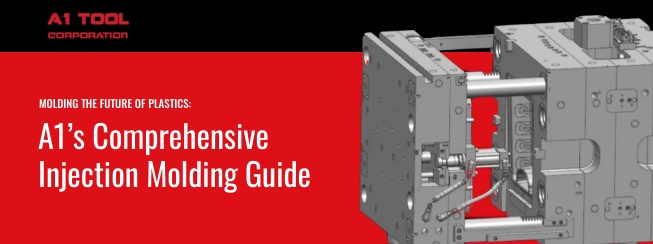Calculated Injection Pressure Molding for Highest Level Of Quality
Injection pressure molding is a critical factor in being able to produce quality molds. Injection molding machines exert an extreme amount of pressure and the mold is subjected to two strong opposing forces — holding the mold open and forcing it closed.
Injection pressure is the pressure under which molds are filled. In other words, it’s the force applied by the reciprocating screw to push molten plastic resin into a mold cavity up to about 95% capacity. Injection pressure molding balances against the machine’s clamping pressure and is calculated based on the size and shape of the part, as well as the size of the gate opening.
You may have heard the term “holding pressure,” which is often used interchangeably with injection pressure. But they are not the same thing. Holding pressure is the pressure that is maintained on the melt after the mold is filled and until the gate freezes or the pressure is removed by cycle timer control. In most cases, it’s holding pressure that determines shrinkage, not the initial injection pressure.
Strong opposing pressures are needed to keep the mold together during and after the molding material is inserted. The opening pressure needs to be strong enough to hold the mold open while injecting the molding material. Each of these pressure types must be exerted to a specific factor, which needs to be carefully calculated before the injection process begins.
The Power of Injection Pressure Molding
During the filling phase of the injection molding cycle, a higher injection pressure may be required to maintain injection speed at the required level. After the mold is filled, high pressure is no longer needed. However, when molding with certain semi-crystalline thermoplastics, the structure deteriorates due to abrupt pressure changes. As a result, sometimes it’s not necessary to apply the stage two pressure.
Injection pressure is important because using an injection molding machine that exceeds the pressure rate required can be dangerous to molds, machines and products. Excess tonnage can result in problems like viscosity and flash. Injection molds need a specific viscosity. If the flow is too thick or too thin, the result can be an inoperable part. Flashing can also occur when the wrong tonnage pressure is applied. This results in an unwanted excess of material on the edges of the part.
The typical value for injection pressure is between 2 to 8 tons per square inch. A general rule of roughly 2.5 tons/inch^2 can be used as a guideline. For example, if polycarbonate is used, then the injection pressure could be 5 tons per square inch.
Other Pressure types used in injection pressure molding
These types of pressure are also critical to creating the best injection plastic molds.
Clamping pressure: This is the pressure that pushes the mold together. It’s used to counter the injection pressure. Using too little clamping force can cause production problems, but an excess tonnage can potentially be more destructive. The tonnage of an injection molding machine refers to the clamping force rate of the injection mold machine. For example, a 50-ton machine can produce a clamping force that is equivalent to 50 tons.
Back pressure: This is the pressure that needs to be generated and surpassed before the screw returns. The general rule is the lower the back pressure, the better. Although high back pressure is beneficial to the uniform dispersion of pigment and the melting of plastic, it can cause several challenges. There are no circumstances where back pressure should exceed 20% of the injection pressure of an injection molding machine.
Nozzle pressure: Nozzle pressure refers to the pressure inside the nozzle that causes pressure on the plastic to flow. It does not have a fixed value but increases with the difficulty involved in mold filling. There is a direct relationship between nozzle pressure, linear pressure, and injection pressure. On a spiral injection molding machine, the nozzle pressure is about 10% less than the injection pressure. In the case of a piston injection molding machine, the pressure loss can reach up to 50%.
When it comes to any challenge involved in plastic injection molding, including calculating injection pressure, you can rest assured that the experts at A1 Tooling will perform at the highest level of excellence.











